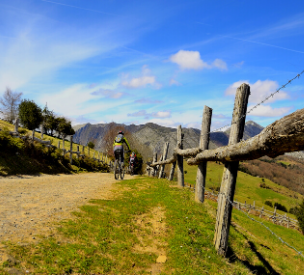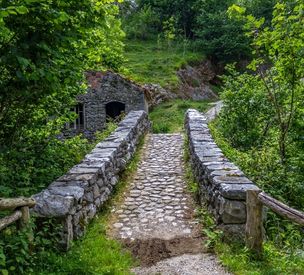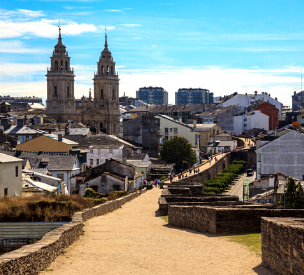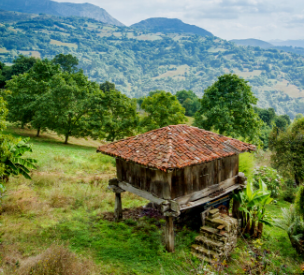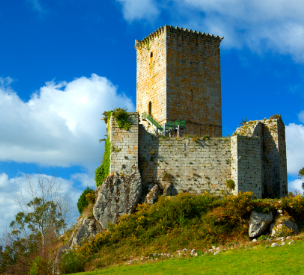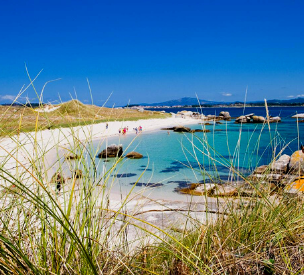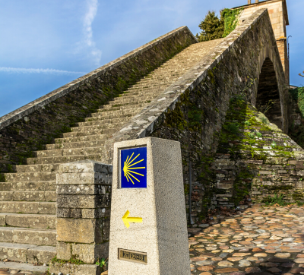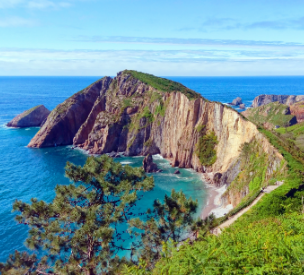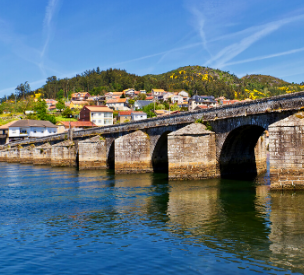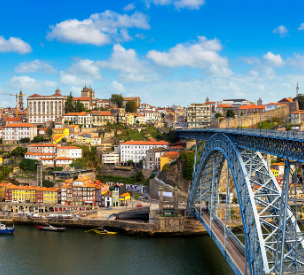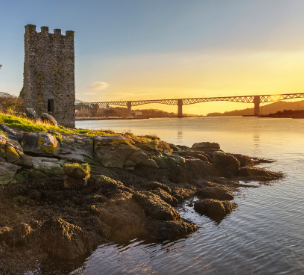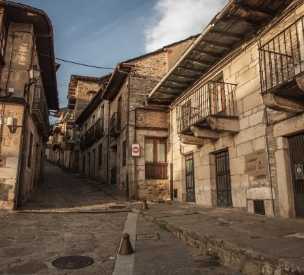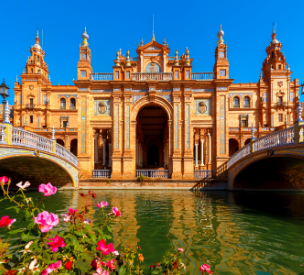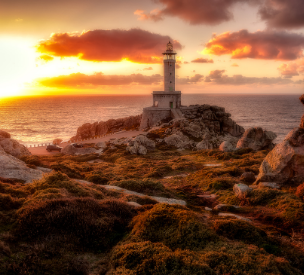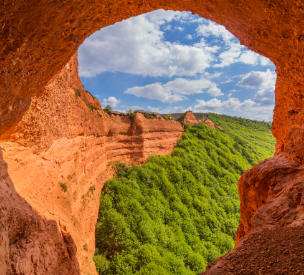Primitive Way
11 stages | 268 km
The essence of pilgrimage in its purest form
The Primitive Way is considered to be the most authentic and the most scenic of all the Pilgrims’ Routes to Santiago. It is a deeply intimate and solitary route that recovers the Jacobean spirit of the first pilgrimages. A journey to disconnect from the world and enter an endless number of silent landscapes rooted in the deepest rural traditions.
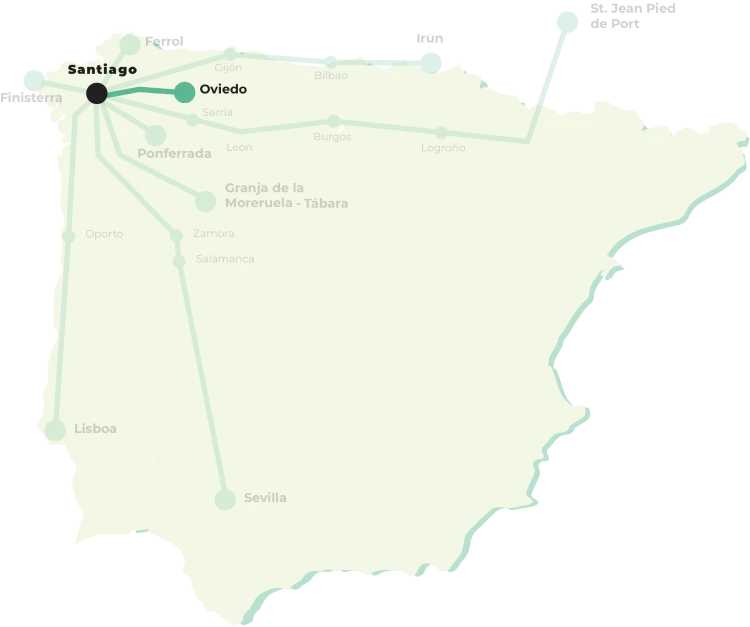
Our Primitive Way Routes
Information of the Primitive Way
The Primitive Way
The Primitive Way starts from the city of Oviedo and runs through the western interior of Asturias, one of the least known areas of the community, whose breathtaking beauty will not leave any walker indifferent. You will enter Galicia through the Alto do Acevo, at an altitude of over 1,000 metres, reaching the walled city of Lugo and continuing your route to Melide, where the Primitive Way joins the French Way, sharing three stages to Santiago de Compostela.
But be careful, if you are planning to do the Camino de Santiago in its primitive route you should know that it is not a walk. It has extremely demanding stages and steep slopes, with hardly any toilets to stock up on supplies. For this reason it is not recommended for beginners or people who are not in good physical shape. Its difficulty intensifies especially in the colder months, when the abundant rainfall turns some sections of the road into real muddy areas, so it is not too advisable to cycle.
The Primitive Way
- Historical monuments of Oviedo
- Monumental historical complex of Salas
- Paseo de los Frailes – Tineo
- Puerto del Palo – Grandas de Salime
- Puerto del Acebo
- Historical monuments of Lugo
- Church of Santa Eulalia of Bóveda
- Cathedral of Santiago de Compostela
Where to start the French route?
The Primitive Way begins in Oviedo, capital of the Principality of Asturias and, like almost all the Jacobean routes, has its goal in Santiago de Compostela. These two cities are separated by a total of 321 kilometres, of which just over half run through Galicia. It is generally divided into 14 stages of between 20 and 30 kilometres, and to cover it in its entirety you will need at least 15 days.
As we have pointed out above, this route has nothing to do with other roads. The Asturian stretch is especially hard and its steep slopes, we insist, will put more than one pilgrim to the test.
Although, as you may already know, it is not necessary to walk the entire primitive route. You can start from wherever you want depending on the days you have available and your physical capacity. If you decide not to do this entire route, the city of Lugo is the perfect place to start your route. From here, you will only have 102 kilometres to go to Santiago, divided into 5 comfortable stages without great difficulties, suitable for anyone.
Map of the Primitive Way
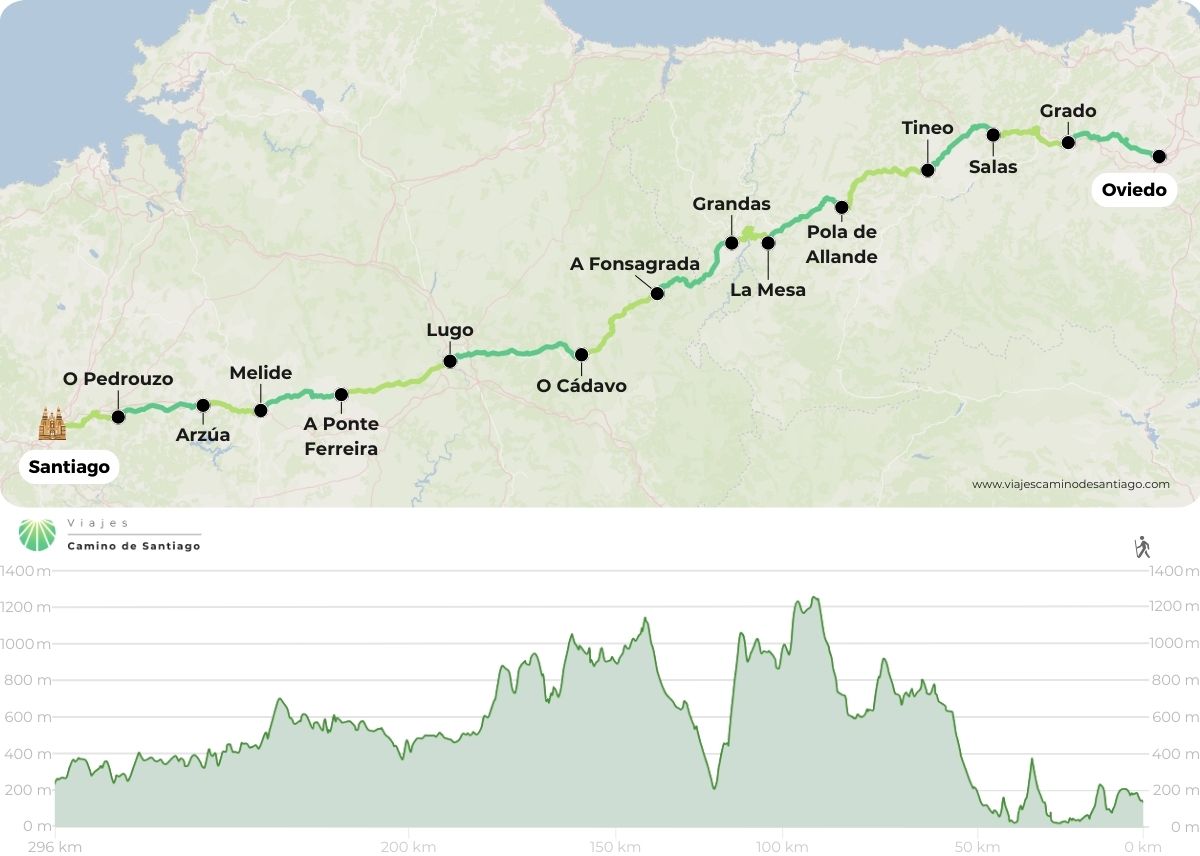
Stages of the Primitive Camino de Santiago
History of the Primitive Route
The Primitive Way gets its name from the fact that it is considered the oldest pilgrimage route to Santiago de Compostela. Its origin is so remote that it is within a period in which legend and history merge, being practically impossible to distinguish them.
The history of this primitive route begins with the discovery of the tomb of the Apostle Santiago in the year 830. At that time, King Alfonso II, nicknamed the Chaste, reigned in Asturias. Asturias was unbreakable by the Muslim invaders thanks to the important war victories, extending its territorial domain to the current Galicia and Castile and Leon. On hearing the news from Compostela, the monarch left immediately from his seat in Oviedo to venerate the remains of the saint. In the 9th century, King Alfonso II was declared the first pilgrim in the history of the Camino de Santiago.
After this first pilgrimage, successors such as King Alfonso III the Great took the example and came to Santiago de Compostela, granting new privileges to the sanctuary.
In 910, the capital of the Kingdom was moved from Oviedo to León. The cathedral of Oviedo suffered a hard setback that was accentuated with the consolidation of the French Way through Leonese lands. But the pilgrims arriving from the Pyrenees discovered the detour of the French Way to the cathedral of Oviedo. At that time, the Cathedral of the Saviour and the Cathedral of Lugo granted great spiritual value, so many pilgrims opted for a detour. Among the pilgrims, the saying “He who goes to Santiago and not to the Saviour, visits the servant but not the Lord” was very famous.
With the passing of the centuries, the Primitive Way lost its presence, but it never stopped having pilgrims. In the 19th century, the decadence was almost total, as in the rest of the Jacobean routes.
But from the 20th century onwards, there was a great revival of the Camino de Santiago, and all the routes began to come to life again. Thanks to a new interest of the administrations and associations, a great work was started to promote and condition the Asturian routes; the routes were signposted and guides were published, hostels were built, and the services for pilgrims increased considerably.
More than a millennium after the first journey of the King of Asturias, the primitive itinerary is a great option for all those pilgrims looking for an alternative away from the overcrowding and the tourist atmosphere of other routes.

